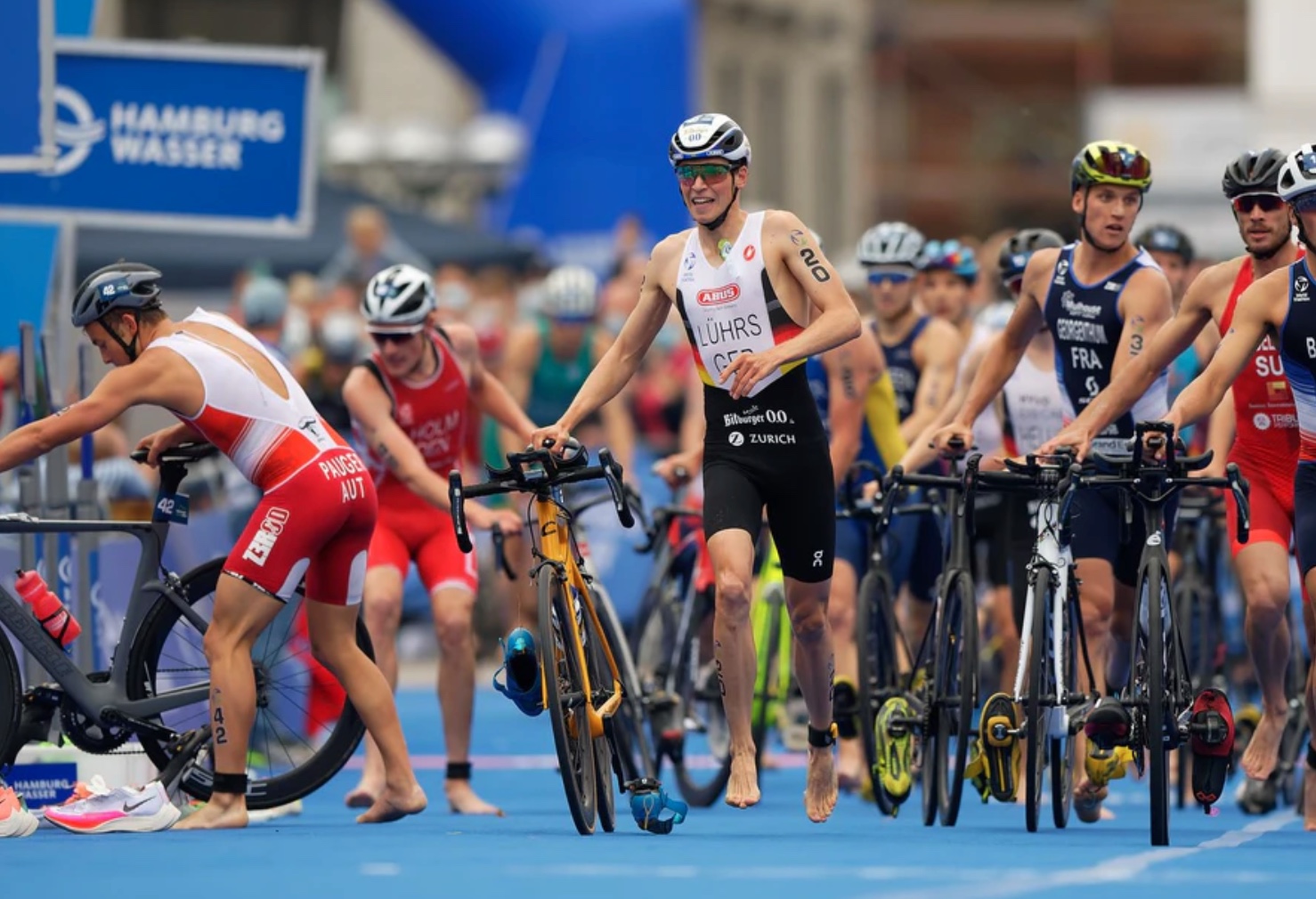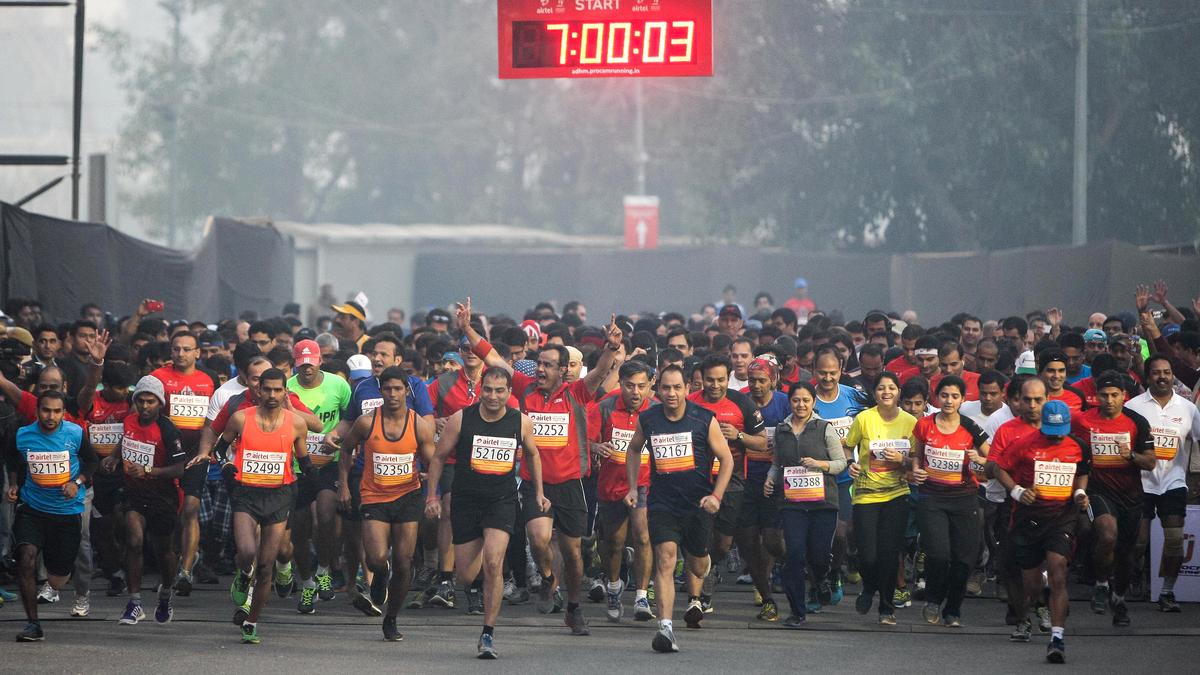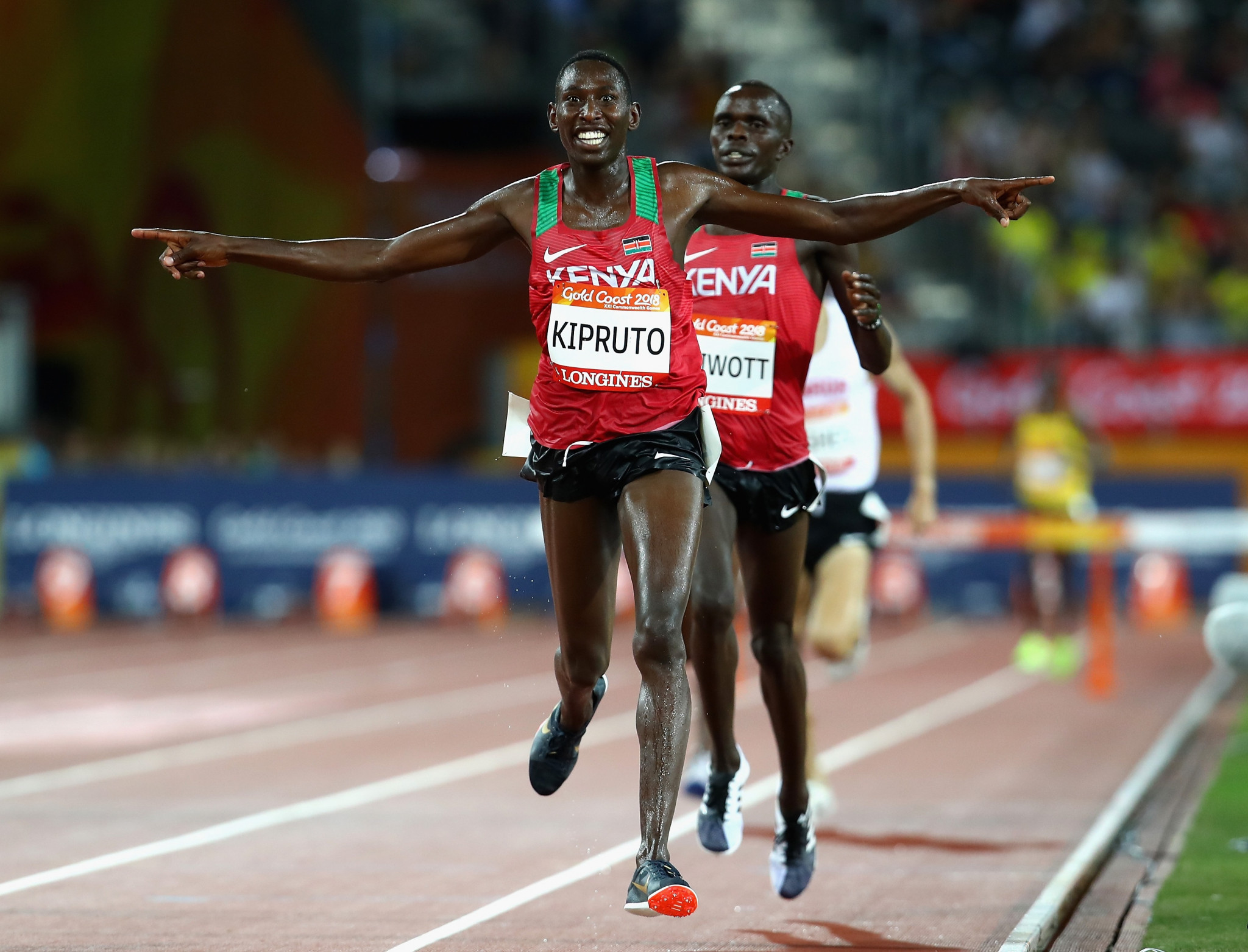Home>Misc>Featured>Which Of The Following Is Known To Enhance Athletic Performance?


Featured
Which Of The Following Is Known To Enhance Athletic Performance?
Modified: January 2, 2024
Discover the featured supplements and techniques that are known to enhance athletic performance. Improve your game and reach new heights with these proven methods.
Introduction
Athletic performance is a dynamic blend of physical abilities, mental focus, and proper training. Athletes, whether professional or recreational, are constantly seeking ways to enhance their performance and achieve their goals. From improving speed and strength to increasing endurance and agility, athletes are always on the lookout for techniques and methods that can give them an edge.
In this article, we will explore various factors known to enhance athletic performance. While there is no one-size-fits-all solution, incorporating these factors into a comprehensive training program can significantly elevate an athlete’s abilities on the field or in the game.
From proper nutrition and hydration to strength training and mental preparation, each element plays a vital role in optimizing athletic performance. Additionally, we will delve into the benefits of specific exercises like plyometrics, speed and agility training, endurance training, and flexibility and stretching. Furthermore, we will touch upon the topic of performance-enhancing supplements and their potential impact.
It is crucial to note that the following information is intended for general guidance and does not substitute personalized advice from qualified professionals. Every athlete is unique, and individual needs and circumstances may vary. Consulting with coaches, trainers, and sports nutritionists is highly recommended to create a tailored training and nutrition plan.
Now, let’s delve into the various factors that are known to enhance athletic performance.
Proper Nutrition
Proper nutrition plays a pivotal role in enhancing athletic performance. Fueling the body with the right nutrients not only provides energy but also supports muscle repair, growth, and overall recovery. Here are some key aspects of proper nutrition:
- Macronutrients: Athletes require a balanced intake of carbohydrates, proteins, and fats. Carbohydrates are the primary source of energy and should make up a significant portion of an athlete’s diet. Protein aids in muscle repair and development, while healthy fats provide essential fatty acids and help regulate hormones.
- Micronutrients: Vitamins and minerals are essential for overall health and performance. Adequate intake of micronutrients, such as vitamin C, vitamin D, iron, and calcium, is crucial for maintaining optimal physical function.
- Timing: Timing of meals and snacks is important to ensure a steady supply of energy during training and competition. Consuming a balanced meal or snack containing carbohydrates and protein before and after exercise can provide the necessary fuel and support muscle recovery.
- Hydration: Staying properly hydrated is fundamental for optimal performance. Dehydration can lead to reduced endurance, impaired cognitive function, and increased risk of injury. Athletes should drink water regularly throughout the day and pay attention to fluid replacement during training and competition.
- Individual Needs: Each athlete has unique nutritional requirements based on factors such as age, gender, body composition, and specific sport. Consulting with a sports nutritionist can help determine individual nutrition goals and develop a personalized plan.
Proper nutrition not only provides the necessary energy for physical activity but also supports immune function, reduces the risk of injuries, and promotes overall well-being. A well-balanced diet, tailored to an athlete’s individual needs, plays a critical role in optimizing athletic performance.
Hydration
Hydration is a vital factor in enhancing athletic performance. Water comprises a significant portion of our bodies and plays a crucial role in maintaining optimal bodily functions. Proper hydration supports performance in several ways:
- Fluid Balance: Staying hydrated helps maintain the body’s fluid balance. When the body is properly hydrated, it can regulate temperature, deliver nutrients to cells, and remove waste products efficiently. This is particularly important during intense physical activity when the body perspires to cool down.
- Performance: Dehydration can negatively impact athletic performance. Even mild dehydration, as little as 2% of body weight, can lead to decreased endurance, reduced strength, impaired cognitive function, and slower reaction times.
- Prevention of Injuries: Proper hydration can help prevent injuries such as muscle cramps, heat exhaustion, and heat stroke. It aids in maintaining joint lubrication, muscle elasticity, and overall tissue health.
- Focus and Concentration: Dehydration can affect mental alertness and cognitive function, leading to poor decision-making and decreased focus during training or competition. Staying hydrated ensures optimal brain function and improved performance.
- Individual Needs: Hydration needs vary depending on factors such as body weight, sweat rate, and environmental conditions. It’s important for athletes to have a personalized hydration plan that takes into account their specific requirements. Monitoring urine color and weight changes can serve as indicators of hydration status.
Athletes should prioritize hydration before, during, and after exercise. Consuming water and electrolyte-rich beverages like sports drinks can help replenish fluids and maintain electrolyte balance. It’s important to note that excessive hydration can also be harmful, so finding the right balance is crucial.
By staying properly hydrated, athletes can optimize their physical performance, maintain their health, and reduce the risk of dehydration-related complications.
Strength Training
Strength training is a fundamental component of enhancing athletic performance. It involves exercises that target specific muscle groups to improve strength, power, and muscular endurance. Incorporating strength training into a comprehensive training program offers several benefits:
- Increased Muscle Strength: Strength training stimulates muscle fiber growth and increases the force-generating capacity of the muscles. This leads to improved overall strength, which can enhance athletic performance in activities that require power and explosiveness.
- Injury Prevention: Strengthening muscles, tendons, and ligaments can help prevent injuries by improving joint stability and reducing imbalances. Strong muscles can provide better support and protection to the body’s structures during physical activities.
- Improved Power Output: Power is the ability to generate force quickly, and it is vital for activities like sprinting, jumping, and throwing. Strength training exercises, such as plyometrics and Olympic lifts, can enhance power production, leading to improved athletic performance in explosive movements.
- Enhanced Muscular Endurance: Endurance is crucial for sports that require prolonged physical exertion. Strength training can improve muscle endurance by increasing the muscles’ ability to resist fatigue, allowing athletes to perform at a higher intensity for longer periods.
- Better Body Composition: Strength training can contribute to favorable changes in body composition by reducing body fat and increasing muscle mass. This can result in improved overall performance, as excess body fat can hinder athletic capabilities.
When incorporating strength training into a training program, it is essential to focus on proper technique and gradually progress the intensity and difficulty of exercises. Working with a qualified strength and conditioning coach can help design a program tailored to individual needs and goals.
Strength training should complement an athlete’s specific sport requirements and be integrated into a well-rounded training plan that includes other components like cardiovascular exercise, flexibility training, and skill development.
By incorporating strength training exercises into their routine, athletes can improve their overall strength, power, endurance, and reduce the risk of injuries.
Plyometric Exercises
Plyometric exercises, also known as “jump training,” are dynamic movements that involve rapid stretching and contracting of muscles. These exercises target the neuromuscular system and help develop explosive power, speed, and agility. Incorporating plyometric exercises into an athlete’s training regimen can offer several performance benefits:
- Enhanced Power and Explosiveness: Plyometric exercises primarily focus on improving the muscles’ stretch-shortening cycle, which enables fast and forceful contractions. This translates into increased power and explosiveness, beneficial for sports that require quick bursts of movements such as jumping, sprinting, and changing direction.
- Improved Reactive Strength: Plyometrics enhance an athlete’s ability to quickly and efficiently respond to external forces, such as contact with the ground or opponents. This improved reactive strength aids in rapid changes of direction, better control of body movements, and improved overall agility.
- Injury Prevention: Plyometric exercises can strengthen tendons, ligaments, and muscles around joints, improving their stability and reducing the risk of injuries. This is particularly important for athletes participating in sports that involve high-impact movements and quick changes in direction.
- Increased Vertical Jump: Plyometrics can significantly improve an athlete’s ability to jump higher. By training the muscles to generate powerful contractions, athletes can increase their vertical jump height, a critical component for sports like basketball, volleyball, and track and field.
- Improved Rate of Force Development: Plyometric exercises enhance the rate at which muscles can produce force, leading to improved quickness and speed. This is beneficial for sports that require rapid acceleration and deceleration, such as soccer, tennis, and basketball.
It is important to note that plyometric exercises should be performed with proper technique and progression to minimize the risk of injury. The intensity and volume of plyometrics should be gradually increased over time as the athlete’s strength and conditioning improve.
Working with a qualified strength and conditioning coach or athletic trainer can help ensure the correct execution of plyometric exercises and the integration of these exercises into a well-rounded training program.
By incorporating plyometric exercises into their training routine, athletes can enhance their explosive power, speed, agility, and overall performance in their respective sports.
Speed and Agility Training
Speed and agility are crucial components of athletic performance. The ability to accelerate quickly, change direction rapidly, and maintain speed can give athletes a significant advantage in their respective sports. Incorporating speed and agility training into a training program can lead to several benefits:
- Improved Acceleration: Speed and agility training focus on developing explosive power, stride length, and frequency, which contribute to improved acceleration. Athletes can generate more force with each stride, allowing them to reach their top speed more quickly.
- Enhanced Change of Direction: Speed and agility training also emphasize quick changes in direction. By developing better body control, deceleration techniques, and multi-directional movements, athletes can navigate the field or court with agility and precision.
- Increased Reaction Time: Speed and agility drills require athletes to react quickly to stimulus, such as a whistle or visual cues. Training the body to react swiftly enhances an athlete’s ability to anticipate and respond to game situations, leading to improved performance.
- Improved Running Technique: Speed and agility training often involve drills that focus on running mechanics, stride length, and foot placement. These drills help athletes develop efficient running techniques, reducing energy wastage and improving overall running economy.
- Better Body Control and Balance: Speed and agility exercises require athletes to maintain balance and control their body movements at high speeds. This training enhances proprioception, spatial awareness, and overall body control, reducing the risk of injuries and improving overall agility.
Speed and agility training should be tailored to the specific demands of an athlete’s sport. It can include drills such as ladder drills, cone drills, shuttle runs, and agility ladder exercises. Incorporating plyometric exercises and resistance training can further enhance speed and agility capabilities.
Working with a qualified speed and agility coach or sports performance specialist can provide athletes with the guidance and expertise needed to design an effective speed and agility training program.
By integrating speed and agility training into their routine, athletes can enhance their acceleration, change of direction, reaction time, and overall performance in their respective sports.
Endurance Training
Endurance is a vital component of athletic performance, particularly in sports that require prolonged physical exertion. Endurance training focuses on developing the cardiovascular system and improving an athlete’s ability to sustain energy output over an extended period. Here are the key benefits of endurance training:
- Increased Aerobic Capacity: Endurance training enhances the body’s ability to efficiently use oxygen during physical activity. This leads to increased aerobic capacity, allowing athletes to perform at a higher intensity for longer periods without fatigue.
- Improved Efficiency: Regular endurance training improves the cardiovascular system’s efficiency, resulting in a lower resting heart rate, increased stroke volume, and improved oxygen delivery to the working muscles. This leads to improved overall performance and reduced energy expenditure during exercise.
- Enhanced Fat Metabolism: Endurance training promotes fat metabolism, enabling the body to use stored fat as a fuel source. This is beneficial for endurance athletes as it helps preserve muscle glycogen stores, delaying fatigue during prolonged exercise.
- Reduced Recovery Time: Endurance training facilitates quicker recovery between intense bouts of exercise. It improves the body’s ability to clear waste products, replenish glycogen stores, and repair muscle fibers, enabling athletes to perform at a high level more frequently.
- Mental Toughness: Endurance training challenges an athlete’s mental resilience and teaches perseverance. Overcoming physical and mental hurdles during endurance training can translate into improved mental toughness and focus during competition.
Endurance training can include activities such as running, cycling, swimming, or rowing. It’s important to gradually increase training volume and intensity to prevent overtraining and reduce the risk of injuries. Cross-training with different cardio exercises can provide variety and prevent monotony in training.
Working with a coach or trainer who specializes in endurance training can help athletes design a well-structured program that addresses their goals and adapts to their specific sport requirements.
By incorporating endurance training into their routine, athletes can improve their aerobic capacity, efficiency, fat metabolism, recovery time, and mental resilience, ultimately enhancing their overall endurance performance.
Flexibility and Stretching
Flexibility is an integral component of athletic performance. It refers to the range of motion around a joint and the ability of muscles and tendons to lengthen and stretch without causing pain or injury. Incorporating flexibility training and regular stretching into an athlete’s routine can offer several benefits:
- Injury Prevention: Flexibility training improves joint mobility and muscle flexibility, reducing the risk of strains, sprains, and muscle imbalances. Increased flexibility allows athletes to move more freely and efficiently, minimizing the likelihood of injuries during physical activities.
- Improved Performance: Adequate flexibility can enhance an athlete’s performance in various sports. It allows for a greater range of motion, leading to improved technique, agility, and power. Athletes with better flexibility can generate more force and move with greater fluidity.
- Enhanced Recovery: Stretching, particularly after intense exercise, can help promote blood flow to muscles, reduce muscle soreness, and enhance recovery. It allows for the removal of waste products and speeds up the delivery of nutrients needed for muscle repair.
- Better Posture and Alignment: Flexibility training can help correct postural imbalances and improve body alignment. This contributes to better form, balance, and stability, enabling athletes to perform movements with optimal efficiency and reduced strain on the body.
- Relaxation and Stress Relief: Stretching and flexibility exercises promote relaxation and can serve as a form of stress relief. These activities help release muscular tension, improve circulation, and promote a sense of well-being.
When incorporating flexibility training into a fitness routine, athletes should focus on both static and dynamic stretching. Static stretching involves holding a stretch for an extended period, while dynamic stretching involves moving through a range of motion. Both types of stretching have their benefits and can be used in combination for optimal results.
It’s important to note that stretching should be performed after a proper warm-up and when the muscles are already warmed up. Holding stretches for 15-30 seconds and repeating them 2-3 times is generally recommended. Avoid bouncing or jerking movements during stretching, as this can lead to injury.
Working with a qualified trainer, physical therapist, or sports therapist to develop a personalized flexibility and stretching routine can ensure proper technique and cater to individual needs.
By incorporating regular flexibility training and stretching into their routine, athletes can improve their joint mobility, muscular flexibility, performance, and overall well-being.
Mental Preparation
Mental preparation is a crucial component of athletic performance. The mind plays a significant role in an athlete’s ability to focus, make decisions, manage emotions, and perform under pressure. Incorporating mental preparation techniques into a training routine can provide several benefits:
- Increased Focus and Concentration: Mental preparation helps athletes develop strategies to improve focus and concentration during training and competition. Techniques such as visualization, mindful breathing, and cue words can help athletes stay present and fully engaged in their performance.
- Improved Confidence: Mental preparation techniques can enhance an athlete’s self-confidence. By visualizing successful performances, setting realistic goals, and challenging negative self-talk, athletes can build confidence in their abilities and perform at their best.
- Stress and Anxiety Management: Competitive sports can bring about high levels of stress and anxiety. Mental preparation techniques such as relaxation exercises, deep breathing, and positive self-talk can help athletes manage stress and anxiety more effectively. This allows them to stay calm and perform optimally under pressure.
- Enhanced Performance Consistency: Mental preparation practices help athletes develop routines and rituals that promote consistency in performance. By establishing pre-competition routines, mental warm-ups, and performance rituals, athletes can create a sense of familiarity and tap into a state of optimal performance more consistently.
- Improved Resilience: Mental preparation strengthens an athlete’s mental resilience and ability to overcome obstacles and setbacks. By developing a growth mindset, setting realistic expectations, and embracing challenges as learning opportunities, athletes can develop the resilience to bounce back from setbacks and continue to strive for success.
Mental preparation techniques can be integrated into an athlete’s training regimen through the guidance of a sports psychologist, mental skills coach, or with the help of online resources and apps. Consistency and practice are key to reap the full benefits of mental preparation.
It’s important to note that mental preparation should be incorporated alongside physical training. By nurturing the mind and developing mental fortitude, athletes can elevate their performance and achieve their full potential.
Performance-Enhancing Supplements
Performance-enhancing supplements are substances that athletes may use to potentially improve their athletic performance. While some supplements may provide certain benefits, it is essential to approach them with caution and understand the potential risks and limitations. Here are some key considerations:
- Legal and Safe Supplements: Athletes should prioritize using legal and safe supplements that have been thoroughly tested and approved by reputable regulatory bodies such as the Food and Drug Administration (FDA). It is important to research and consult with healthcare professionals to ensure the safety and legality of any supplement being considered.
- Individual Needs and Goals: It’s crucial to recognize that not all supplements work the same for every athlete. Each individual may have different nutritional needs and unique goals, and what works for one person may not necessarily work for another. Consulting with a sports nutritionist can help determine specific nutritional requirements and guide supplement choices.
- Supplement Regulation: Regulations regarding supplements vary across countries. It’s important to understand the laws and regulations in the athlete’s specific location and ensure compliance with anti-doping policies if applicable.
- Nutritional Adequacy: Supplements should not be viewed as a substitute for a well-balanced diet. A foundation of proper nutrition through whole foods should always be the primary focus. Supplements, if used, should be seen as additions to support an already healthy diet, not replacements.
- Evidence-Based Claims: It’s crucial to critically evaluate the claims made by supplement manufacturers. Look for supplements that are supported by scientific studies and have evidence to back up their effectiveness and safety.
- Risks and Side Effects: Supplements can carry risks and potential side effects. It is important to be aware of the potential risks, drug interactions, and possible adverse reactions. Athletes should be cautious when combining multiple supplements and medications.
It is recommended to consult with a sports medicine physician, sports nutritionist, or registered dietitian before considering the use of any supplements. These professionals can provide personalized guidance based on an athlete’s specific needs and goals.
Lastly, it is important to remember that supplement use should never substitute for hard work, proper training, rest, and recovery. Performance-enhancing supplements should be regarded as a supplementary tool rather than the sole determinant of athletic success.
Conclusion
Enhancing athletic performance requires a holistic approach that encompasses various factors. From physical training and nutrition to mental preparation and supplementation, athletes can optimize their abilities and strive for peak performance. Understanding and implementing these elements can make a significant difference in an athlete’s performance and overall success.
Proper nutrition provides the fuel and nutrients needed for sustained energy, muscle repair, and recovery. Hydration is essential for maintaining optimal physical function and preventing dehydration-related complications. Strength training improves muscle strength, power, and endurance, while plyometric exercises enhance explosiveness and agility. Speed and agility training focuses on quick changes in direction and sharp movements, while endurance training develops the body’s ability to sustain energy output over time. Flexibility and stretching help improve joint mobility, prevent injuries, and enhance performance. Mental preparation techniques enable athletes to focus, manage stress, and develop resilience. And when it comes to supplements, athletes should exercise caution, prioritize legal and safe options, and consider individual needs and goals.
It is crucial to remember that constructing a personalized approach is key. Every athlete is unique, with different goals, strengths, and areas for improvement. Working with qualified professionals, such as coaches, trainers, sports nutritionists, and sports psychologists, can help develop tailored training programs and nutritional plans that address individual needs and optimize performance.
While the pursuit of athletic excellence requires dedication, hard work, and discipline, incorporating the right techniques and practices can set athletes on the path to success. By combining physical and mental training, proper nutrition, and precautionary measures, athletes can unleash their full potential and achieve the performance levels they desire.








